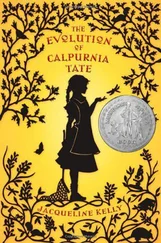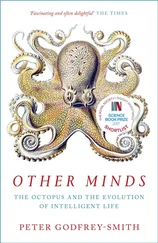We have already indicated what the Minoan element contributed to this mixture. It included such very practical things as the Mediterranean diet, as well as less tangible traits such as much of the foundations of Greek esthetics: the sense of beauty and of proportion, the inclination toward naturalism in art, the love of nature, and the strong sense of community that was such a significant element in the Greek city-state. The development of naturalism out of earlier geometric art about the seventh century is usually regarded as a manifestation of the "Greek genius," but might better be regarded as a reemergence of Minoan tendencies after their submergence by Iron Age invaders.
The contributions of the Phoenicians to the period of mixture are well known. Coming late, they included the alphabet, many techniques in metalwork and other productive processes (including the goatskin bellows in ironwork), a considerable amount of mythology (such as Hephaestus, the god of craft skills), units of weight and measures (including money), and, many musical instruments and techniques, generally attributed by the Greeks to Cinyras (the Canaanite Kinnor). In addition, of course, the Phoenicians contributed the basic conditions that led to a revival of civilized living in the West: law and order on the seas, extension of distant trade, reappearance of city life, the recreation of an urban class, and the revival of writing. On these foundations ancient society was able to rear a new civilization because it had an instrument of expansion. This instrument was slavery.
2. Gestation
Slavery arose originally from the Indo-European conquest of the archaic peoples of the Mediterranean basin. Some of this may have come with the Bronze Age invasions, but the greater part undoubtedly arose as a consequence of the Iron Age invasions. These events created a kind of domestic slavery used in agricultural activities rather than the kind of plantation slavery we generally think of because that is the kind we know from American history. This means that each family, except for the very greatest, had no more than a few or several slaves and that these lived with their owners' families under conditions of close personal relationships. In many cases the owner worked directly in the fields with his slaves, and he always supervised them, between intervals of military campaigns. Thus the owner had a personal knowledge of his lands, his slaves, and of agricultural techniques. If improvement in the use of these was needed, he was in a good position to know it. Moreover, he had an incentive to make such improvements, since any increased agricultural output would accrue to him. And, finally, he was in a position to mobilize capital to make such improvements, because he had the legal right and power to retain for his own use part of the output of each of his slaves. The slaveowner, especially in the earliest period, had very local interests, and the society in which he lived consisted very largely of small, almost self-sufficient economic units, largely agrarian in their activities. The earliest types of expansion were also local and agricultural—such things as clearing of wastelands for new fields, provision of a more adequate water supply, draining of swampy areas, the building of defensive stockades on neighboring hilltops, and terracing. The best known of such ancient works were the draining of Lake Copais in Boeotia and the many cuniculi of Etruscan Italy.
The accumulation of surpluses of the ordinary necessities of life in the control of slaveowners also contributed to expansion by creating a demand for luxury goods of remote origin. This demand, met by the activities of the Phoenicians, led to the beginnings of commerce and later to the rise of towns. At least three times in history a society organized in small self-sufficient agricultural units has shifted to an urbanized commercial society by the growth of a demand for luxury goods of remote origin because of the accumulation of surpluses of necessities of local origin within the self-sufficient agrarian units. This occurred about 4000 B.C. in western Asia; it occurred after 900 B.C. in Classical antiquity; and it occurred after A.D. 1000 in Western civilization. Without a little thought on the subject we might be tempted to believe that a tradeless society consisting of self-sufficient agricultural units would begin to develop trade by the growth of local trade in necessities, but history and logic demonstrate quite clearly that the earliest commerce to appear in a tradeless society is in luxury goods of remote origin. There would be no possibility of any local trade in necessities among units that were self-sufficient in necessities. Only later, when remote trade in luxuries has given rise to urban concentration of commercial people who lack necessities, does such local trade develop.
The growth of such commerce became a principal manifestation of expansion in Mediterranean civilization, and was clearly established before 800 B.C. It was preceded and then accompanied by an intensification of agricultural practices. Both of these required the accumulation of capital, based on slavery, to which we have referred. The agricultural expansion was originally a shift toward growing emphasis on crops, with decreasing emphasis on pastoral activities. The proportions of cattle, sheep, even horses and all other livestock except goats were reduced. Grazing areas were turned into crops; lands held in common became individually owned; there was a growing pressure on the land, and landownership became increasingly inequitable.
This economic inequality helped accumulation of capital but gave rise to explosive social and political pressures such as those described in the earliest periods of Greek or Roman history. They were relieved, thanks to men like Solon, by diverting both manpower and capital into commerce and city building. These provided full-scale expansion.
3. Expansion
Full-scale expansion, by diverting political and social pressures into peaceful and constructive directions, reduced social conflicts and warfare. It was manifested in the usual four ways, as growth of population, accelerated production, geographic expansion, and increased knowledge. These all occurred in the eastern Mediterranean at least a century before they appeared in the western Mediterranean, so that it is convenient to give slightly different dates for this period in the east and the west. We might say that the Age of Expansion in the eastern Mediterranean was from about 850 B.C. to about 450, while in the western basin it was about 700 to 250 B.C.
The growth of population and of production in the Classical Age of Expansion is beyond dispute. Much of it appeared as the growth of cities in both numbers and size and in the growing specialization made possible by increasing commerce. As Greek colonies were established in graingrowing regions, such as the Black Sea shores or in Sicily, these newer areas began to ship back grain and metal ores to Greece itself, seeking as payment olive oil, wine, and metal products. Of these three Greek exports, two were liquids, a fact giving rise to a demand for pottery containers that could hardly be met by Greek craftsmen. Thus vigorous crafts activities in ceramics and in metals, particularly arms, appeared in the Greek commercial cities. At the same time the shift in agricultural activities from food grains to wool, wine, and oil increased the tendency toward large estates, since these could be produced more effectively on larger than on smaller holdings. This trend toward larger land units continued into the following two stages, the Ages of Conflict and of Universal Empire.
Geographic expansion of Classical civilization in Stage 3 widened ancient geographic knowledge from the narrow area, surrounded by monsters, that was known by the contemporaries of Homer (about 725 B.C.) to the much wider knowledge possessed at the establishment of the Museum at Alexandria in the third century. Part of this increase came from the intense period of colonization before 500 B.C. This was carried on by the Phoenicians as well as by the Greeks. The former established colonies in North Africa (like Carthage), in Sicily (like Utica), and in Spain (like Cadiz). Greek cities, like Miletus, Ephesus, Corinth, and Megara, also sent out colonies. The chief colonized areas were the northern shores of the Aegean Sea, the Black Sea, eastern Sicily, and southern Italy, but there were others outside these limits, such as Naucratus in Egypt and Marseilles in Gaul. In fact, the Greeks penetrated almost everywhere except the Tyrrhenian Sea, including northwestern Italy and Corsica, where they were excluded by the Etruscans, and west of Sicily, where they were excluded by the Phoenicians and Carthaginians.
Читать дальше










